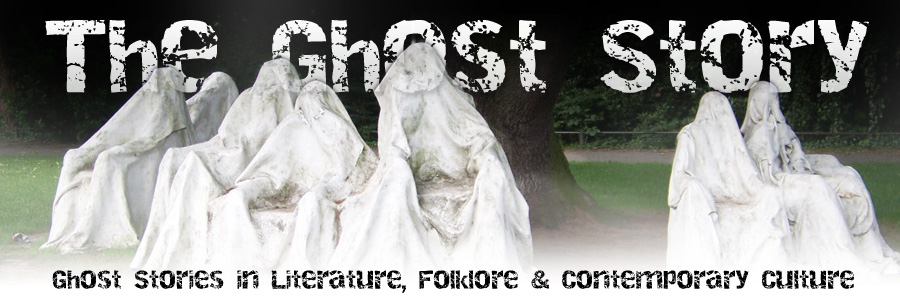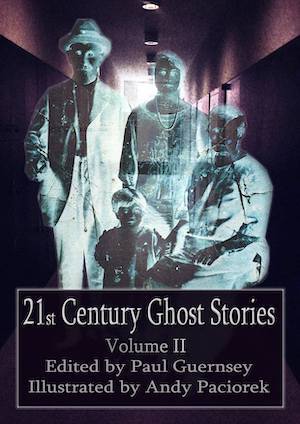by Editor
on September 16, 2014
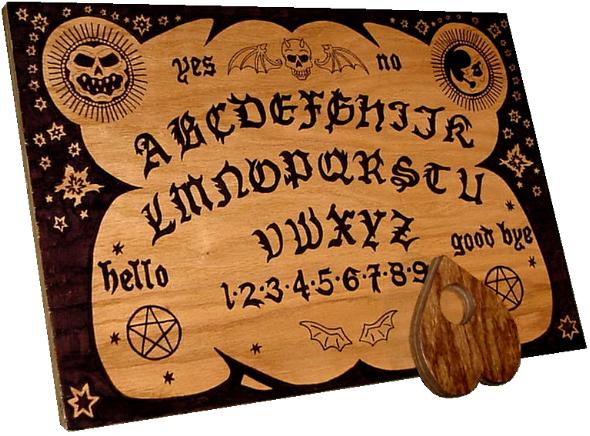
An Early English Ouija Board
Ouija Boards—What Are They Really?
Almost all of us have seen, if not used, a Ouija (pronounced wee-ja) board. Game and toy company Hasbro, Inc., currently owns the trade mark, but around nine other companies produce similar products, calling them “spirit” or “talking” boards. Regardless of the names the manufacturers use, the public generically refers to all of them as Ouija boards.
In its contemporary form the Ouija board is a game board illustrated with letters, numbers, and the words “No,” “Yes,” and “Good bye.” The Ouija set includes a small, plastic table called a planchette designed to slide easily across the board on a trio of felt feet. The planchette usually contains a round window from the center of which protrudes a brass pin that serves as a pointer. [continue reading…]
by Editor
on September 15, 2014
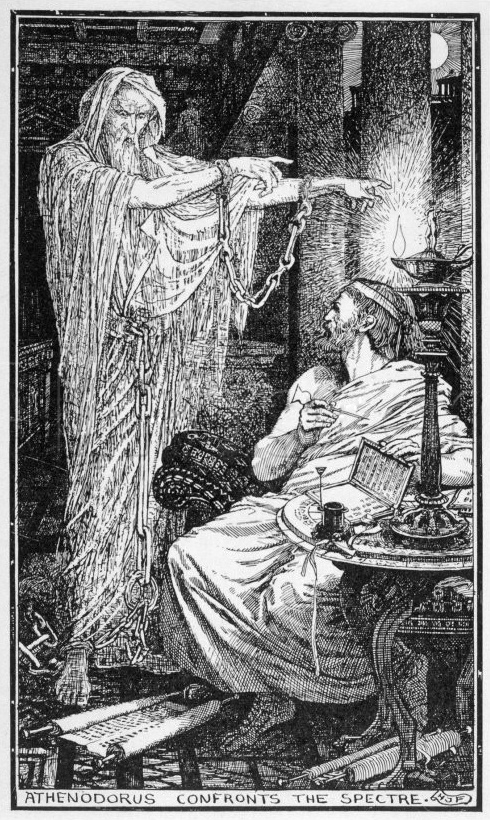
Athenodorus Regrets Renting A Haunted House. By Henry Justice Ford
A Haunting In Ancient Athens
This old, old tale of a ghost who haunts a house starts out like so many contemporary horror films that feature haunted houses: 1) Man finds an attractive home for rent at a ridiculously cheap price. 2) Man is warned that the place is no real bargain because it’s haunted by a malevolent spirit. 3) Man scoffs at the ghost stories and rents the house anyway. 4) Scary things begin to happen. 5) The scary things get scarier and scarier and soon the man is doing an imitation of the Cowardly Lion in The Wizard of Oz: “I do believe in spooks. I do, I do, I do. . . . ”
The distinction enjoyed by the story of the ancient Greek philosopher, Athenodorus, and the haunted villa he rented in Athens is that it’s the first Western haunted house story ever to be written. The author was Pliny the Younger, and the text was in the form of a letter that Pliny wrote to a friend around two thousand years ago. [continue reading…]
by Editor
on September 15, 2014
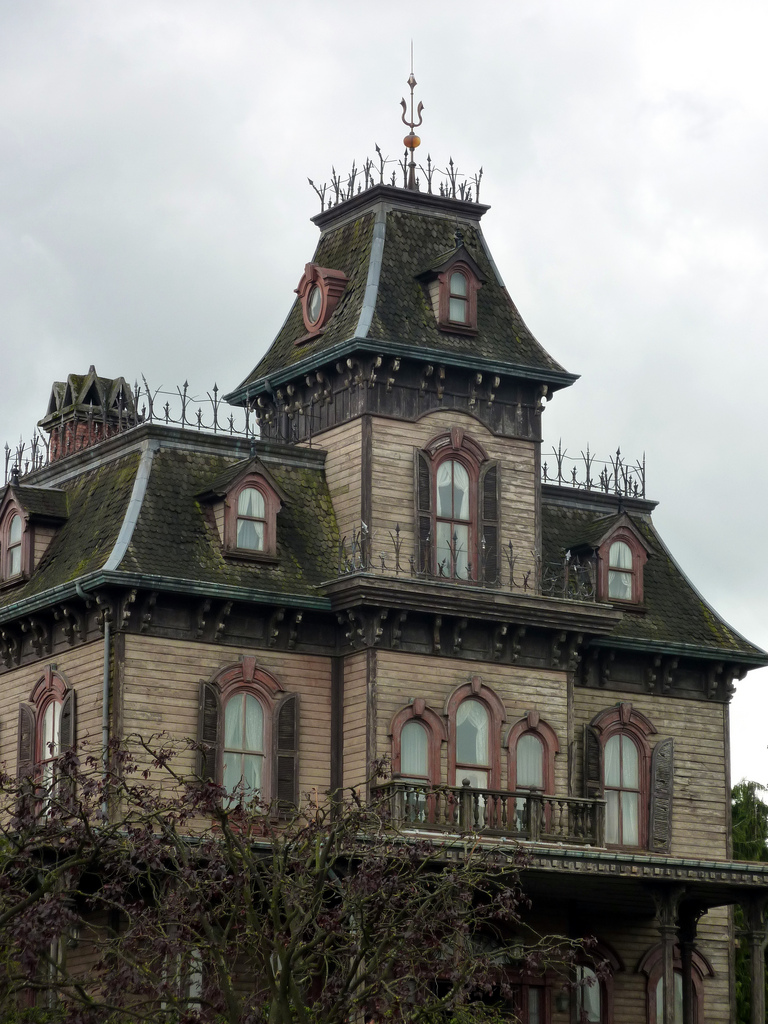
A Victorian-Style House, Allegedly Haunted. Photo: Sean MacEntee
How Does A House Become Haunted?
People have talked about haunted houses for at least two thousand years. The oldest written story or account of a haunted house was penned by a Roman named Pliny the Younger, who wrote a letter describing a haunted villa in Athens. According to Pliny, in addition to a phantom who frightened passers-by, the deserted house was infamous for the crashing noises and the sounds of rattling chains that emanated from it at night.
Haunted houses are dwellings said to be inhabited by one or more ghosts who have some sort of attachment to the place that makes them unwilling or unable to leave it. In many accounts the living person who became the haunting spirit was murdered in the house; in others, the ghost him- or herself is that of a murderer. Ghosts are also said to haunt a dwelling because of a strong connection to someone or something inside it—a precious object, or a relative or other person who lives there or used to live there, and whom the ghost hopes will return one day. [continue reading…]
by Editor
on September 12, 2014
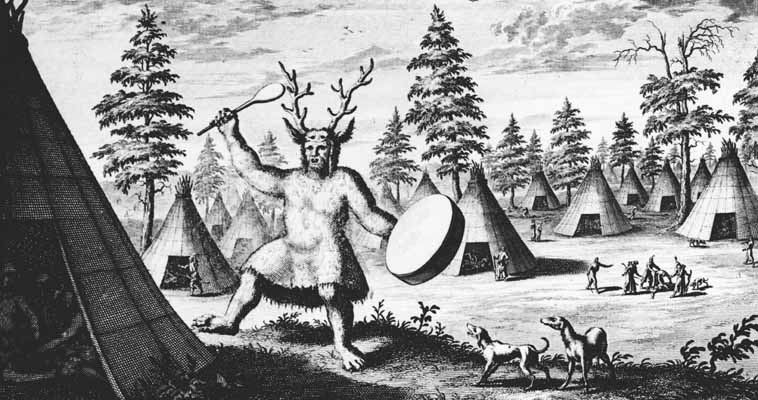
A Siberian Shaman, Drawn In The Late 1600s By Dutch Explorer Nicolaes Witsen
Spirit Worship: The Foundation Of All Spirituality
When early humans first contemplated their universe—the living world around them along with the night sky, the wind, the depths of waters, and their own dreams—they determined that unseen spirits were at work in and behind everything they saw. Eventually groups all around the world who had no contact with one another independently developed supernatural beliefs that centered on the respect, fear, or worship of spirits, often including the ghosts of their own dead ancestors and other loved ones. Rituals inspired by these beliefs included ceremonial interment of the dead, sacrificial offerings of food and other goods to disembodied beings, magical procedures for the handling of animals killed during a hunt, and an array of other actions taken to maintain the goodwill of the spirits.
These similar belief systems together are known as animism, and they formed the foundation of all later, more “sophisticated” religions. However, not only does animism continue among some native peoples of the 21st Century, but contemporary religions are still nourished by their hidden animistic roots. In fact, in Hinduism as well as in Buddhism as it is practiced in many countries, animism is not hidden at all, but openly and tightly entwined. [continue reading…]
